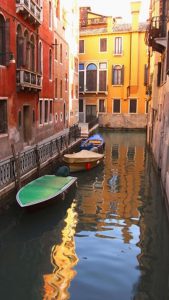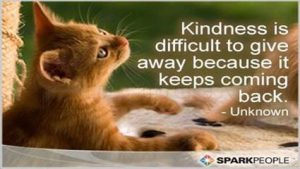I got outdoors a lot over the long weekend—rowing and bicycling, and the hot weather was just right for the swimming pool. My daughter and her husband came down from Cleveland to visit. Their Labradoodle puppy still hasn’t quite figured out how to walk up the pool steps, but at least he has discovered that he can stand on the bottom step and leap out of the pool.
There wasn’t really much time for blogging, which was okay until an annoying self-critical part of my subconscious began to draw unfavorable comparisons to my creative output in the past. Maybe you’ve lost your mojo, it suggested nastily. You haven’t written much in months. What happened to the days when stories just popped into your head all the time, no matter how busy you were?
At first I tried to dismiss the voice, but then I started wondering—did I really have that much more creative energy in the past? Maybe this was just selective memory playing tricks on me, highlighting times when my younger self bubbled over with new stories, while skipping over the mundane stuff. How would I know?
Then it occurred to me that an imaginary visit with one of my younger selves might help me find an answer to that question. I decided to call her Butterfly because there was a time, many years ago, when I pictured one as my animal spirit guide, carefree and flitting easily from one place to another.
I tried to construct a mental image of this younger self sitting comfortably with a pen and notepad in hand, busily scribbling away. She had her own ideas about that, however. The comfy chair stayed empty; and when Butterfly finally showed up in my mindspace, she was pedaling cheerfully along on a three-speed bike from the 1970s, with her bell-bottom jeans rolled up so they wouldn’t catch and rip on the chain.
I was riding next to her in the same workout clothes I wore on Sunday in the park, on my Made-in-the-USA fifteen-speed Huffy bicycle from 1994. It still works just fine, as does my husband’s matching bike. (Over the weekend he upgraded both bikes with nice modern carbon-fiber water bottle holders, which, needless to say, is the only bit of carbon fiber to be found anywhere on them—but, at least now they’re not 100% ancient.)

“Hello,” I said to my younger self, as we rode slowly along a quiet, shaded path in the park. The fast-paced real world seemed very far away.
“Hi,” replied Butterfly in a distracted tone, just before stopping her bike in the grass beside the path and exclaiming, “Ooh, look at the pretty flowers!”
I stopped next to her, and yes, the flowers were pretty—wild roses and honeysuckle all tangled together like a bright, living curtain that swayed gently in the breeze.
“If I had my phone with me,” I said, talking more to myself than to my companion, “and this was a real place, I’d take a picture of these flowers for a blog post.”
Butterfly turned to face me, frowning slightly, as if she thought I’d said something very peculiar indeed. She inquired, “Don’t you ever do anything just to do it?”
Now it was my turn to feel perplexed. “Well, of course I do. I’ve spent a lot of time outdoors this spring. But lately I’ve been feeling like I haven’t had as much creative energy as usual—so, I thought I’d ask you about that. How do you manage distractions and stay creative?”
“Manage distractions?” she repeated blankly, as if I’d been speaking in a foreign language. Then, apparently losing interest in the flowers, she hopped back on her bike and pedaled briskly away, leaving me to catch up with her.
Wondering what I’d said to confuse her, I tried rephrasing the question. “I meant, how do you stay creative when you have a lot of things happening that distract you?”
“Well, usually they’re all different things, aren’t they?” Slowing down for a moment as we rode through a bumpy spot of dried mud, Butterfly raised her left hand in a vague gesture that seemed to include trees, grass, a squirrel, and some cottonwood fluff drifting softly to the ground. “And creativity has to do with fitting a lot of different things together in ways that make sense in the story, right? So, distractions should never be a problem, in themselves. If they aren’t naturally coming together into stories that make sense, then maybe the question to ask is: What other random thoughts have been wandering into the picture?”
After we rounded a curve, a straight, level pathway stretched before us, cool and pleasant in the shade of the overhanging trees. All I could hear was the chirping of the birds and the humming of our wheels.
“You know,” I said finally, “that way of looking at it does kind of make some sense.”
Butterfly, whose attention now seemed to be focused mainly on a woodchuck munching clover on the other side of the path, didn’t answer; but I thought I saw a little smile forming as she glanced away from me.










